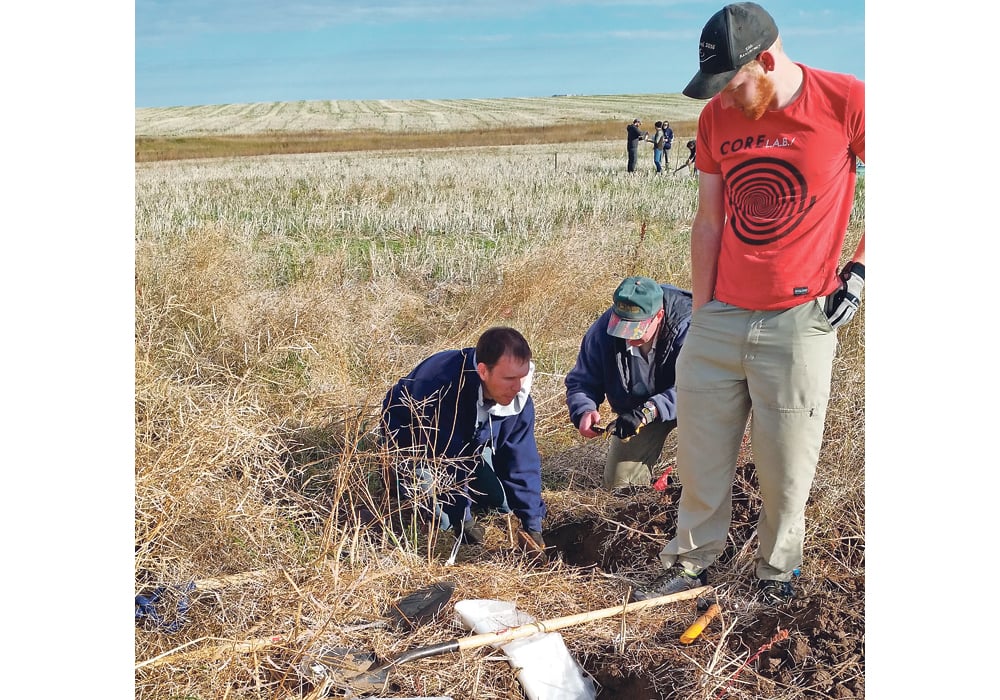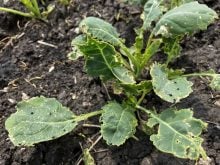Most farmers are familiar with the 4Rs of nutrient stewardship — the right source, at the right rate, applied at the right time in the right place.
For fertilizer, the right place at the right rate are the most important.
When it comes to phosphorus, farmers and researchers agree the right place is buried in the soil, not running off down a ditch, because if phosphorus is running down a ditch, it will end up in streams, rivers and lakes.
Scientists wanted to find the perfect combination of “right place at the right rate” for the prairie provinces. When farmers place fertilizer on a field, they’d like it to stay there. However, water that runs off a field can take some of that valuable product with it. This water takes two forms. It’s either rainfall runoff or snow melt. Snow melt causes most run-off losses on the Prairies.
Read Also

Growing garlic by the thousands in Manitoba
Grower holds a planting party day every fall as a crowd gathers to help put 28,000 plants, and sometimes more, into theground
Knowing how each form of runoff affects fertilizer will affect the “right place, right rate” calculation.
Rainfall runoff and snow melt runoff may result in different fertilizer management recommendations, says University of Saskatchewan soil scientist Jeff Schoenau, who headed up a research team to delve into the question.
“This work contributed to finding better practices for phosphorus fertilization,” Schoenau explains.
“These findings will help growers in the northern Prairies make better use of their fertilizer. By applying the fertilizer in the right place at the right rate, growers can greatly lower the phosphorus loss from snow melt runoff.”
For the right place part of the fertilizer, researchers studied applying fertilizer to the top of the soil and leaving it there versus in-soil placement. The in-soil placement involved placing fertilizer in the furrow with the seed or next to it in a separate furrow. It can also refer to broadcasting fertilizer onto the soil followed by mixing it into the soil rather than leaving it on the surface.
They applied different rates of these two methods: top-of-soil and in-soil. Their results showed that the in-soil placement resulted in less phosphorus loss from snow melt runoff.
“In the case of phosphorus fertilization practices, in-soil placement is helpful because it can help roots better access and take up phosphorus. Also, having phosphorus placed in the soil rather than on the surface reduces its interaction with runoff from snow melt in early spring.”
Phosphorus can end up in different forms depending on the chemistry of the soil. When phosphorus fertilizer is applied, it undergoes transformation in the soil through reaction with minerals and organic matter. Ideally, it will end up in a form plants can use.
“Our main message is that benefits can be realized by getting the phosphorus fertilizer into the soil where the roots are rather than leaving it on the surface” says Schoenau.
He says that runoff from snow is different than runoff from summer rains. The force of rainfall can loosen pieces of the soil containing phosphorus. Snow melt runoff moves the element differently, mostly in its dissolved form from the soil and pieces of plants on the surface.
“In order to encourage growers to follow the best practices, it’s important to document and understand why and how a specific practice like the one we tested works. I am both a scientist and farmer on the Prairies interested in furthering the environmental and economic sustainability of our modern cropping systems.”

















